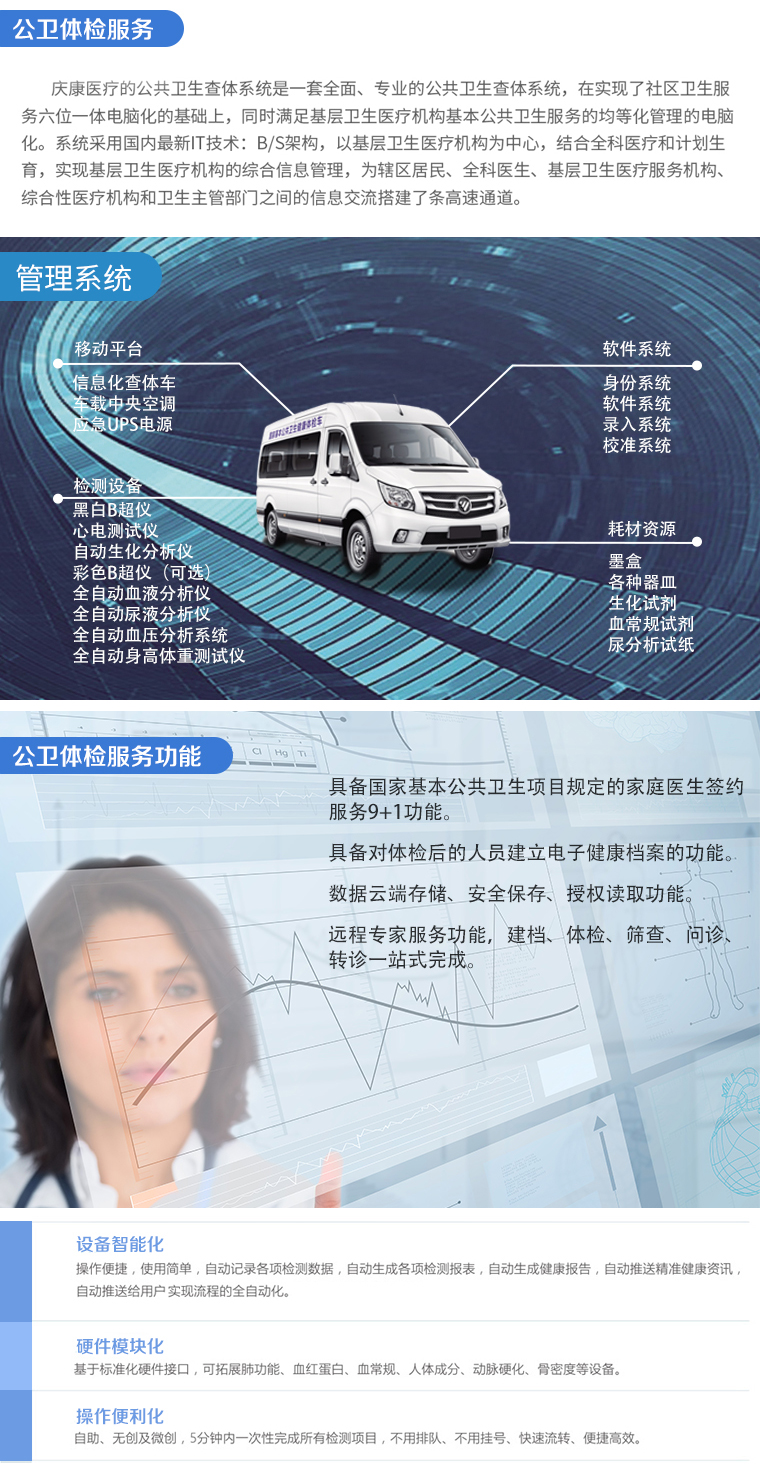實施案例
產品推薦
新聞推薦
公共衛生系統與醫院內部系統數據
- 2023-08-12
- http://www.cnjinxinmweb.cn/ 原創
- 130
This service has provided 41 services of 11 categories for urban and rural residents free of charge in the past years, including the establishment of residents' health records, health education, vaccination, health management of children aged 0 to 6, maternal health management, health management of the elderly, health management of patients with hypertension and diabetes, management of patients with serious mental diseases, reporting and handling of infectious diseases and public health emergencies, and health supervision and management. This is an important aspect of promoting the gradual equalization of basic public health services, a key task of deepening the reform of the medical and health system, and a major livelihood project that benefits thousands of households. The coverage of China's 1.3 billion population is closely related to the health and well-being of the people.
然而基層醫療機構往往在落實此服務中在健康檔案數據錄入等數據互通上普遍面臨四大痛點:
However, grassroots medical institutions often face four major pain points in implementing this service in terms of data exchange such as health record data entry:
建立健康檔案方面
In terms of establishing health records
基層醫療機構將本身醫療系統上的病人信息錄入到公衛平臺健康檔案模塊如果原系統沒有數據導出功能那么此方面存在數據采集的問題;
Grassroots medical institutions input patient information from their own medical system into the health record module of the public health platform. If the original system does not have data export function, there is a problem with data collection in this regard;
系統間數據不通
Data communication between systems
基層醫療機構的本身系統與公衛平臺是兩個相對獨立的系統公衛平臺采用B/S架構如果本身系統只局限于內網使用做到數據互通更是難上加難。
The system of grassroots medical institutions and the public health platform are two relatively independent systems. The public health platform adopts a B/S architecture, and it is even more difficult to achieve data exchange if the system is limited to internal network use.


開通接口方面
In terms of opening interfaces
開通接口需在軟件廠商協調一致的情況下進行落實執行然而廠家一般不配合再加上基層醫療機構的醫務人員一般IT背景不強并且接口開發的成本費用高開發時間長。
The implementation of interface opening needs to be coordinated and executed by the software manufacturer. However, the manufacturer generally does not cooperate, coupled with the fact that medical personnel in grassroots medical institutions generally have a weak IT background and the high cost and long development time of interface development.
人工獲取數據人工錄入
Manual data acquisition and manual entry
采用人工采集原系統的數據錄入到公衛平臺是一個重復性高的電腦操作采集錄入過程機械枯燥浪費人力成本不說容易出現錯填漏填的情況工作效率低。
The use of manual collection of data from the original system and input to the public health platform is a highly repetitive computer operation. The collection and input process is mechanically tedious, wasteful, and labor-intensive. Not to mention, it is prone to errors and omissions, and the work efficiency is low.
趨于上述痛點目前比較受追捧的軟件機器人在解決公共衛生系統與醫院內部系統數據互通的問題上提供了解決方案:
The software robots that are currently highly sought after in addressing the issue of data exchange between public health systems and hospital internal systems have provided solutions that tend to address the aforementioned pain points:
它可以做到自動化批量完成在原系統上的數據采集工作再將采集到的數據輸出成一張標準的Excel表格形式或者其他數據庫格式文件。然后再批量錄入到公衛平臺之中。整個過程無需接口開發所以不存在與軟件廠商對接免除了接口開發費用和開發所耗時間成本。整個采集和錄入過程一旦軟件機器人運行起來無需人工干預做到快速采集準確填寫零出錯率的效果。
It can achieve automated batch data collection on the original system, and then output the collected data into a standard Excel spreadsheet or other database format file. Then batch input it into the public health platform. The entire process does not require interface development, so there is no need to interface with software vendors, which eliminates interface development costs and development time costs. Once the entire collection and input process is run by the software robot, there is no need for manual intervention to achieve rapid and accurate collection and zero error rate filling.
市面上的軟件機器人已經運用得十分廣泛在各個領域都有很出色的案例。但在數據對接方面小幫軟件機器人就是一款很具代表性的軟件工具。
The software robots on the market have been widely used and have excellent cases in various fields. But in terms of data docking, Xiaobang Software Robot is a very representative software tool.




